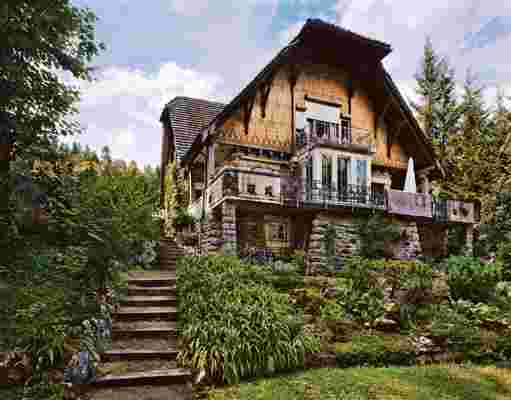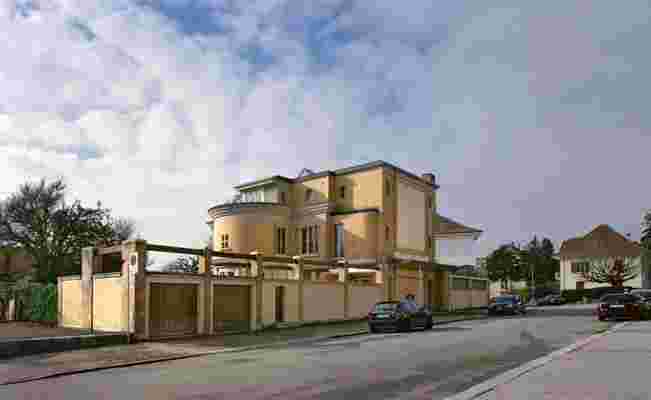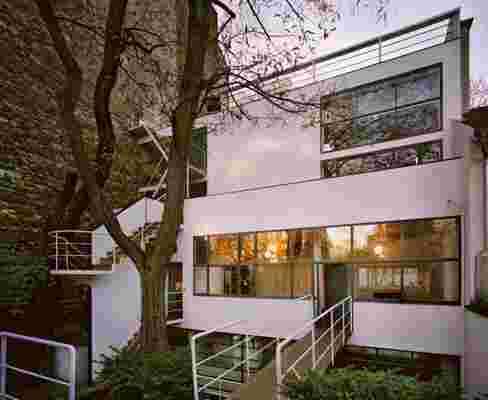The 20th century was one of the more divisive eras in architectural history, with pioneers like Frank Lloyd Wright, Ludwig Mies van der Rohe, and Walter Gropius paving the way for modernism—sometimes to the distaste of critics and the public. But perhaps no architect was as controversial during that era as Le Corbusier, today beloved and respected by architecture buffs around the world. The French-Swiss architect, born Charles-Édouard Jeanneret, was not just a largely self-taught designer, but also a painter and writer, taking his pseudonym in 1920 when he wrote for an arts journal in Paris. (The moniker comes from an old family name: Lecorbésier.) Today, the polarizing figure is the subject of a new book Le Corbusier: The Built Work ( $125, Monacelli Press ), a photographic survey by Richard Pare of nearly the entire oeuvre of the architect reflecting the current state of his buildings. “While their inscription on the list of UNESCO world heritage sites has placed demands for protection on a significant part of the works of a giant of modern culture,” writes author Jean-Louis Cohen in the introduction, “Richard Pare’s investigations capture their present features—from the provisionally immaculate surfaces of buildings that have been so recently repaired, to the wounds inflicted on others, which have been left in a state of abandon, that one hopes is only temporary.” Here, we look at ten of Le Corbusier’s projects from the book.
Villa Fallet, La Chaux-de-Fonds, Switzerland, 1905–07

Le Corbusier’s first commission, this house features medieval elements within the context a traditional Swiss chalet. The architect was only 18 when he was assigned this project, so his teacher, Charles L’Eplattenier, partnered him with the more experienced architect René Chapallaz for it.
Villa Schwob, La Chaux-de-Fonds, Switzerland, 1916–17

For ten years, Le Corbusier worked in La Chaux-de-Fonds—this was his final project in the town. The flat-roofed house would earn the nickname “the Turkish villa” for its Ottoman-style influences, from the flat roof to the geometry of the structure to the ocher brickwork.
Maison et Atelier Planeix, Paris, 1924–29

When Le Corbusier moved to Paris, his work took on the more modernist aesthetic the architect is known for. Here, he designed a living space and a studio for the funerary sculptor Antonin Planeix.
Centrosoyuz, Moscow, 1928–36
Le Corbusier won an open competition to design the headquarters of the consumer cooperatives of the U.S.S.R., producing a massive building comprising three main structures. “Le Corbusier was fascinated by the density of pedestrian movement in Moscow and concluded that ‘architecture is circulation,’” writes Cohen. “He would deploy an ‘architectural promenade’ over seven stories, utilizing ramps of varying amplitude and curvature.”
Unité d’Habitation, Marseille, France,1946–52
In an infamous 1952 essay, Frank Lloyd Wright called Le Corbusier’s Unité d’Habitation a “massacre on the Marseilles [sic] waterfront.” The blocky communal housing complex enraged many critics, but the architect believed it to be a stepping stone to his idea of a utopian city.
Mill Owners' Association building, Ahmadabad, India, 1951–56
While in India to develop the city of Chandigarh, Le Corbusier took on a side project in Ahmadabad, producing this Brutalist building as the headquarters of the city’s Mill Owners' Association. The term Brutalism was coined from the architect’s description of his use of concrete as “béton brut,” which literally means “raw concrete.”
Camping Units, Roquebrune-Cap-Martin, France, 1952–57
After designing his personal retreat, the petite but superfunctional Le Cabanon in Roquebrune-Cap-Martin, France, Le Corbusier built these five adjoining vacation homes on the same property, keeping them small but efficiently designed, just like his own home. The colorful structures have a Japanesque look.
Palace of the Assembly, Chandigarh, India, 1951–63
Chandigarh, the capital city of the Punjab and Haryana regions of India, was planned by Le Corbusier, who took over from Albert Mayer and Matthew Nowicki, after the latter died in a plane crash. Pictured here is the vast Palace of the Assembly.
Carpenter Center for the Visual Arts, Cambridge, Massachusetts, 1959–62
The Carpenter Center for the Visual Arts at Harvard University is the architect’s only project in the U.S. Though patron Alfred St. Vrain Carpenter wished for a U.S. architect to design the new arts building to be named in his honor, Josep Lluís Sert, dean of the Graduate School of Design, secured the commission for his friend Le Corbusier.
Le Corbusier: The Built Work .
RELATED: Le Corbusier’s Iconic Design Has Been Reimagined for Modern Use
